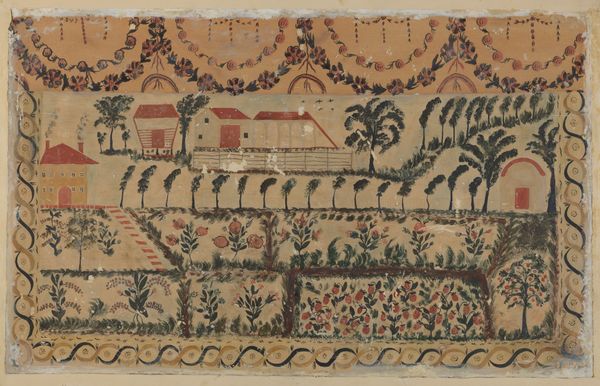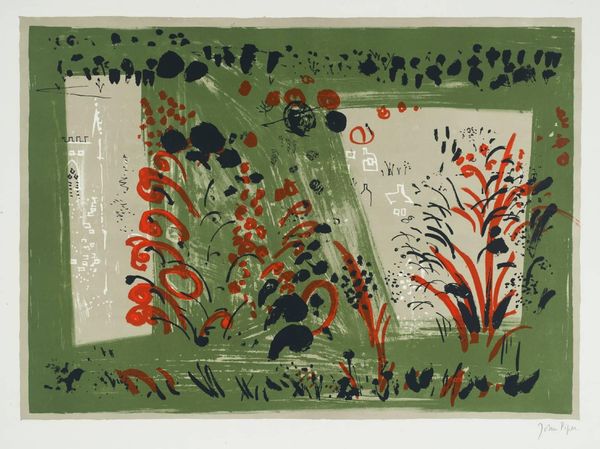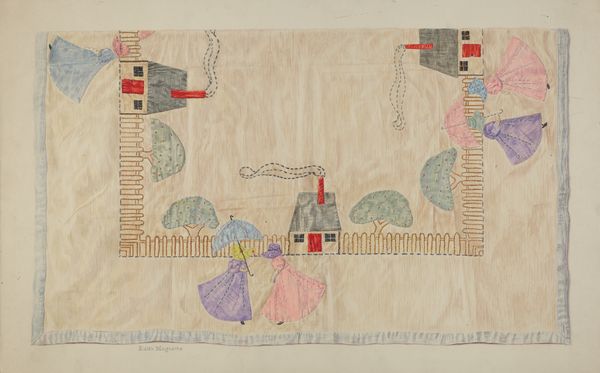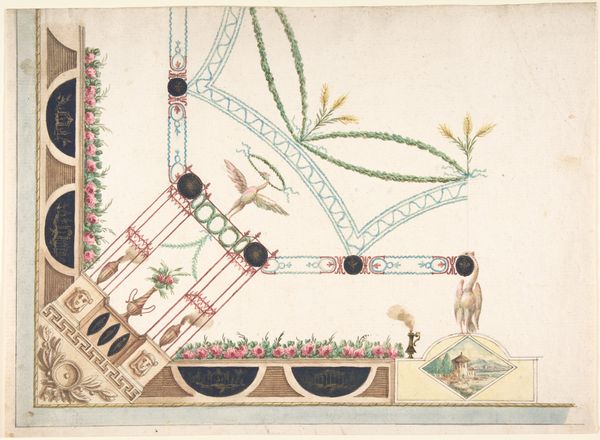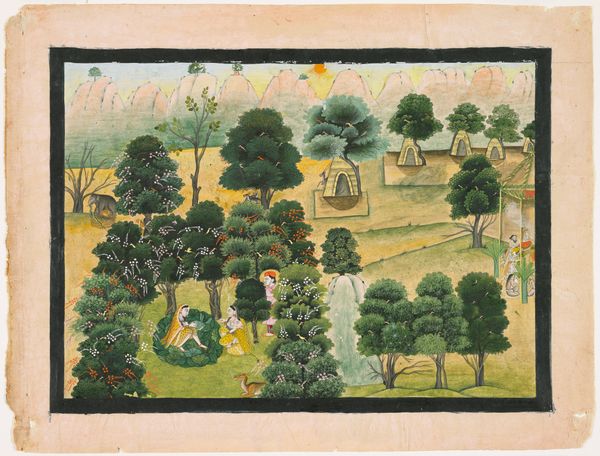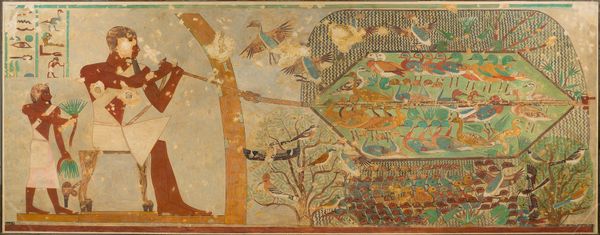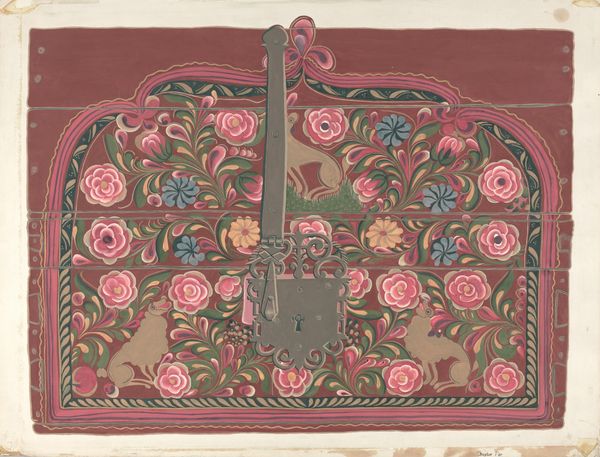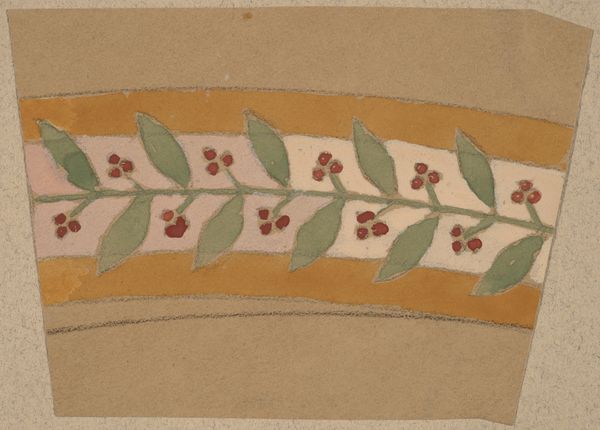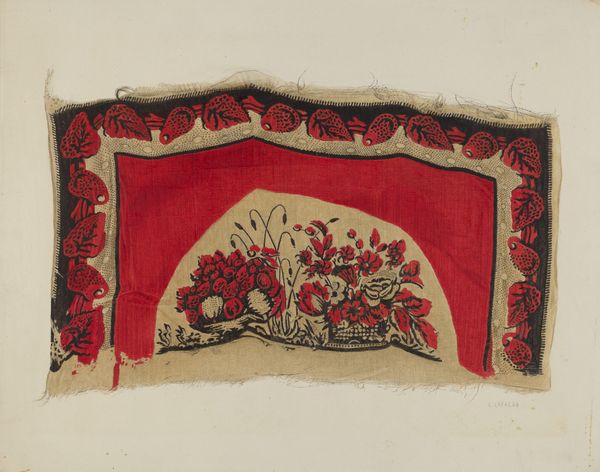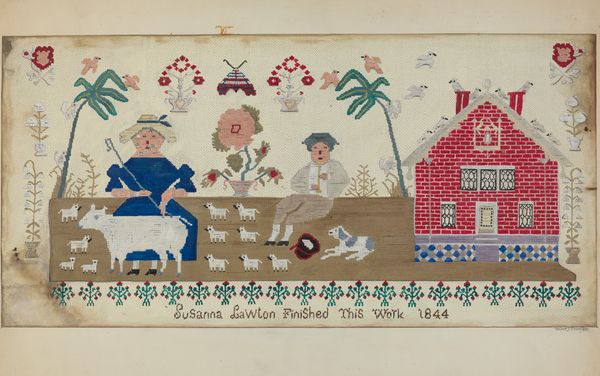
drawing
#
drawing
#
natural stone pattern
#
water colours
#
pottery
#
handmade artwork painting
#
tile art
#
wooden texture
#
pattern repetition
#
watercolour bleed
#
layered pattern
#
watercolor
Dimensions: overall: 44.9 x 69 cm (17 11/16 x 27 3/16 in.)
Copyright: National Gallery of Art: CC0 1.0
Editor: Here we have John Collins' "Over Mantel Picture," created around 1939 using watercolors and drawings. It feels so meticulously organized, almost like a child’s rendering of an idealized farm. How do you interpret this work? Curator: The painting's flattened perspective and almost diagrammatic approach certainly invite us to consider it through a lens that understands folk art as a distinct form of visual expression, one that prioritizes function and accessibility over traditional techniques like linear perspective. Think about how Collins, in 1939, a time marked by anxieties of pre-war tensions, perhaps presents this rural idyll as a longing for simpler, more secure times. The precise arrangement of the landscape and architectural elements gives me the impression of order amidst uncertainty, reflecting a broader social need for stability. Do you notice any other elements in the artwork that speak to that longing? Editor: Well, the repetitive patterns along the top and bottom borders do feel pretty comforting, a little like wallpaper. And, maybe it's a stretch, but could the garden brimming with produce suggest a sense of self-sufficiency, of providing for oneself? Curator: Precisely. This notion of self-sufficiency, and of harmonious labour with the land, ties into a prevalent discourse of the era - an embrace of agrarian ideals as a refuge from the disruptions of industrial society. The picture’s domestic setting underscores themes of shelter and continuity but consider too how that sense of security could also speak to notions of exclusion – who has access to that ideal and whose labor sustains it? Editor: That's a great point. It seems that beneath the surface there’s this quiet, complex conversation happening about belonging and national identity. Curator: Yes, art offers itself as both a reflection and a critical intervention of our cultural narrative. Every element of an image might open avenues to explore a kaleidoscope of different angles: social class, gender roles, race, or personal introspection. Editor: I'll definitely look at folk art differently now, seeing its engagement with society. Curator: And that engagement changes with every encounter.
Comments
No comments
Be the first to comment and join the conversation on the ultimate creative platform.
